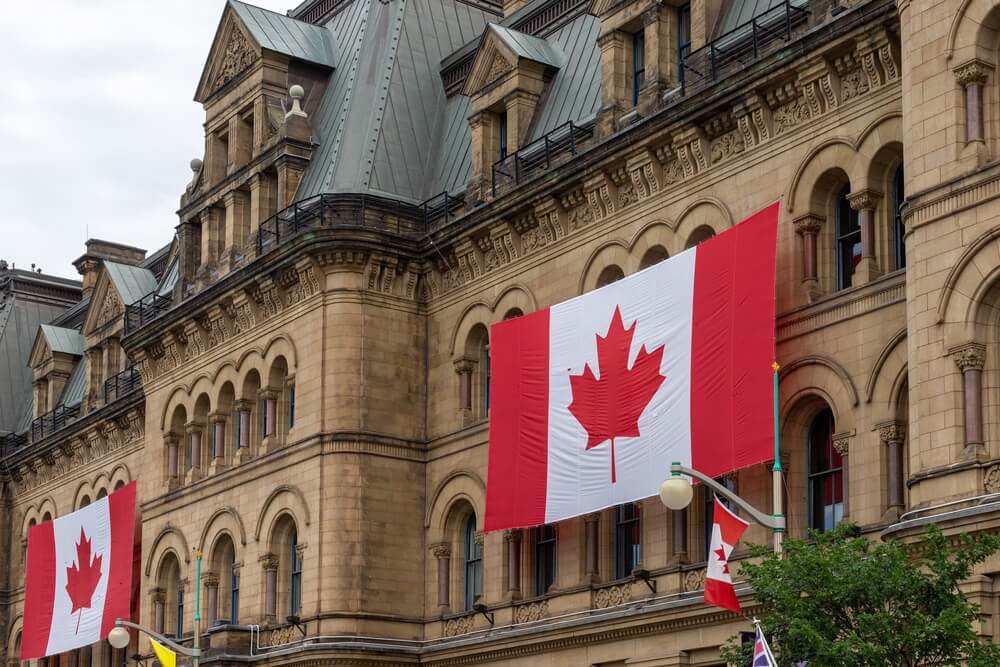
If you are not redirected within 30 seconds, please click here to continue.
Samedi: 10h – 16h HAE

If you are not redirected within 30 seconds, please click here to continue.
If you are not redirected within 30 seconds, please click here to continue.
BoC keeps policy rate steady as US tariffs and trade war cloud economic outlook

KEY FINDINGS
- The Bank of Canada is keeping the policy rate at 2.75% after two recent cuts to balance inflation and economic pressures.
- New 25% tariffs on autos and other goods are driving costs up, slowing growth, and hurting confidence.
- Canada lost 62,000 jobs in March, pushing unemployment to 6.7% as businesses cut hiring and investments.
- Home sales are at a three-year low, with Toronto sales down 23%, though lower rates may aid recovery.
- Tariff concerns caused bond yields to drop to a two-year low before rising again, which could lead to higher fixed mortgage rates.
The Bank of Canada (BoC) is holding its policy interest rate steady at 2.75% today, following its seventh consecutive rate cut since mid-2024.
This comes on the heels of softening inflation, which rose 2.3% in March, down from 2.6% in February. The slowdown was largely due to lower gasoline and travel costs.
The 25% tariff on Canadian auto imports to the US and the matching 25% tariff on US auto imports to Canada (with some exceptions) have heightened trade tensions. Along with other tariffs on a range of goods, these measures are driving up costs and could contribute to rising inflation, all while slowing economic growth.
The Bank is in a tough spot. While it can't cut rates too aggressively without risking higher inflation, it also needs to support an economy under pressure.
Across the country, businesses are holding back on investing and hiring as uncertainty rises. For everyday Canadians, this still means higher costs and more concerns about job security in the coming months.
Related: Ask the Expert: What’s your mortgage strategy in Trump’s tariff war?
What does the future hold for the Canadian economy?
According to their latest summary of deliberations, released on March 26, 2025, and following the March 12 rate cut decision, the Bank of Canada was leaning toward keeping rates steady at 3%. The newly imposed 25% tariff on Canadian auto imports to the US, which went into effect April 2, created significant pressure, weakening consumer and business confidence.
“While tariffs add some additional upside to inflation, they also add downside risk to growth,” Shelly Kaushik, senior economist and vice president of economics at the Bank of Montreal (BMO). “Though the Bank has already cited that risk as its argument to cut for the last couple of meetings.”
Looking ahead, she thinks they’ll be more cautious in lowering rates further due to the heightened uncertainty.
“We decided to hold policy rate unchanged as we gain more information about path forward about U.S. tariffs and its impacts,” said Governor Tiff Macklem said during the morning announcement.
He also noted that while monetary policy cannot resolve trade uncertainty or fully offset the impacts of a trade war—what it can do is ensure Canadians maintain confidence in price stability.
He continued, “our focus will be on assessing the downward pressure from a weaker economy and the upward pressure from higher costs. We aim to support economic growth while keeping inflation well-controlled.”
Until the situation becomes clearer, the Bank noted it is prepared to act decisively if incoming information points clearly in one direction.
Learn more: BoC cuts policy rate by 25 basis points amid trade tensions: what does this mean for Canadians?
Full-time jobs hit hardest last month
Statistics Canada recently reported a loss of 62,000 full-time jobs in March, the largest drop since 2021. This pushed the unemployment rate up to 6.7%, continuing its gradual rise since early 2023.
According to Pauline Lierman, vice president of Market Research at Zonda Urban, a real estate intelligence firm, “March numbers showed some minor slippage in manufacturing industries but more of the losses were service-related positions.”
However, job market data is often “backwards looking,” says Kaushik, so it takes time for economic changes to show up in the numbers.
“The March report was soft across the board, so there weren’t any obvious signs that the weakness came directly from the trade war,” she adds. “Job reports can be very volatile month-to-month, so we’ll need a few months to see if there’s a persistent trend in the weakness we saw last month”.
Rising unemployment and job losses typically lower consumer spending, which slows economic growth. With reduced demand, businesses are scaling back on hiring and investments, creating a cycle that could lead to prolonged stagnation.
Related: How much more money do you need to make to buy a home in Canada?
Bond yields lowest in two years and fixed mortgage rates plateau despite last month’s rate cut
Escalating U.S. tariffs have caused stock markets to tumble, leading investors to seek out safer options like government bonds. At the same time, the Canadian dollar has strengthened, trading at 71.26 cents US compared to 69.83 cents US earlier this week.
Earlier the Canadian 10-year bond yields had fallen to around 2.47%, their lowest level in nearly two years. They’ve since rebounded to 3.09% (earlier today).
“Markets reacted dramatically to the headlines on tariffs, especially following the April 9th reciprocal tariffs and delays,” reflects Kaushik.
She explains bond yields jumped in Canada, including the benchmark 5-year government bond yield. If bond yields remain elevated, we can expect fixed mortgage rates to creep upwards.
Read more: Inflation is impacting your mortgage rate. Here's what you can do about it
Did the threat of tariffs kill the spring housing market?
Home sales across Canada hit their lowest level in nearly three years in February, as fears of a U.S. trade war deterred buyers and raised concerns about an economic slowdown.
According to the Toronto Regional Real Estate Board (TRREB), home sales in the Greater Toronto Area (GTA) dropped by 23.1% in March compared to last year, with new listings surging by 28.6%.
Lierman’s team in Toronto has noticed an oversupply of completed and unsold preconstruction condos, leading to fewer new project launches this year.
“Usually at this time of year, we see a wave of new project launches,” she says.
Meanwhile, cities across Canada are still dealing with a housing crisis that keeps homes out of reach of many families.
“While the March numbers look a bit soft, we think that’s partially because affordability remains a challenge in some pockets of the country,” says Kaushik. “Plus, there’s higher-than-normal uncertainty surrounding the economic outlook.”
If tariffs remain in place or escalate, she says then we 'll start to see the impact on economic activity and a more prolonged recovery in the housing market.
But she says, “there will still be some support in the form of lower mortgage rates and pent-up demand coming back online, so we’re still expecting a relatively stable recovery—it just might take a bit longer.”
Read next: Ask the Expert: How Trump's tariffs will affect your Canadian mortgage
Compare Mortgage Rates
Engaging a mortgage broker before renewing can help you make a better decision. Mortgage brokers are an excellent source of information for deals specific to your area, contract terms, and their services require no out-of-pocket fees if you are well qualified.
Here at Rates.ca, we compare rates from the best Canadian mortgage brokers, major banks and dozens of smaller competitors.
Get money-saving tips in your inbox.
Stay on top of personal finance tips from our money experts!








